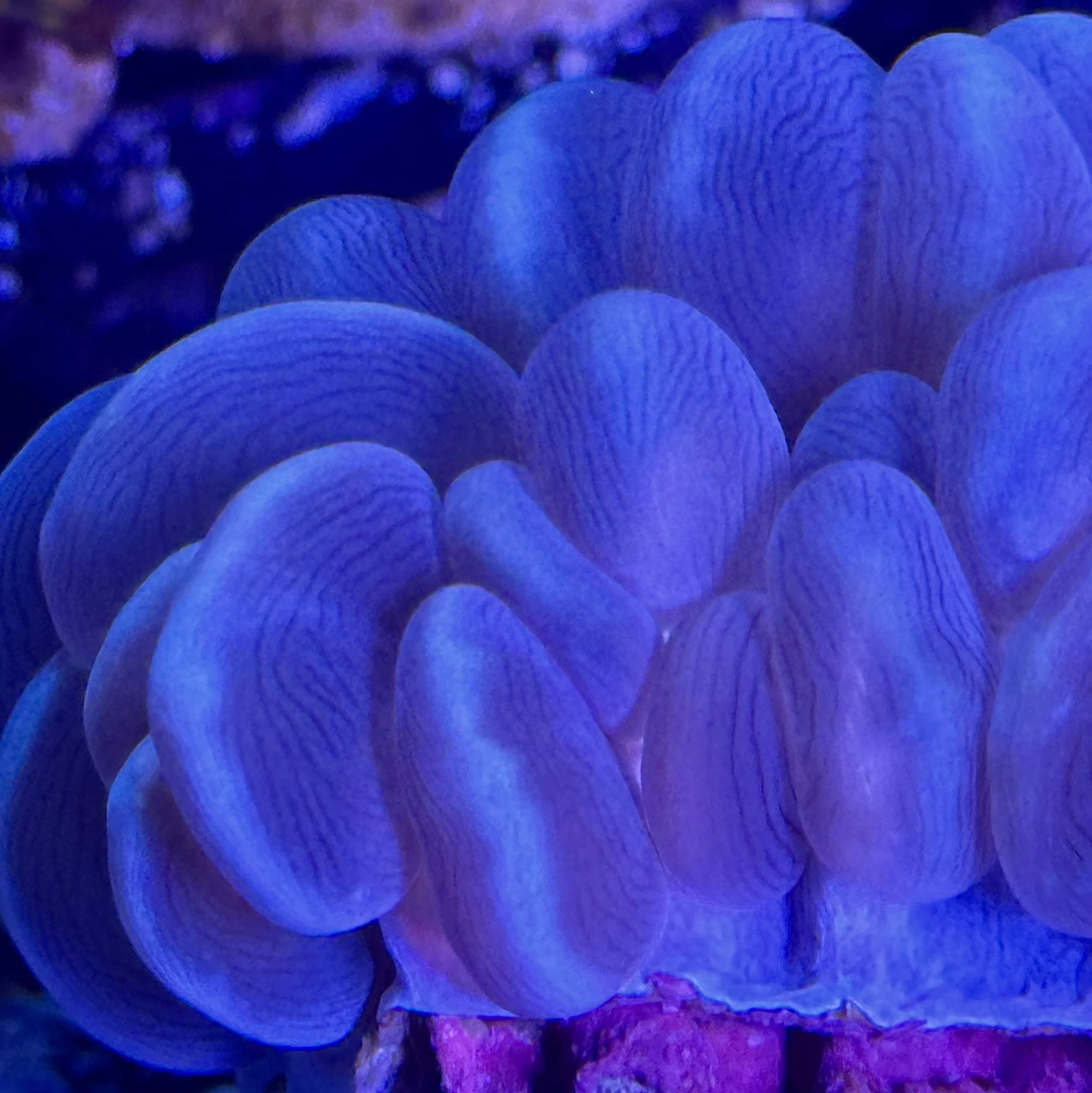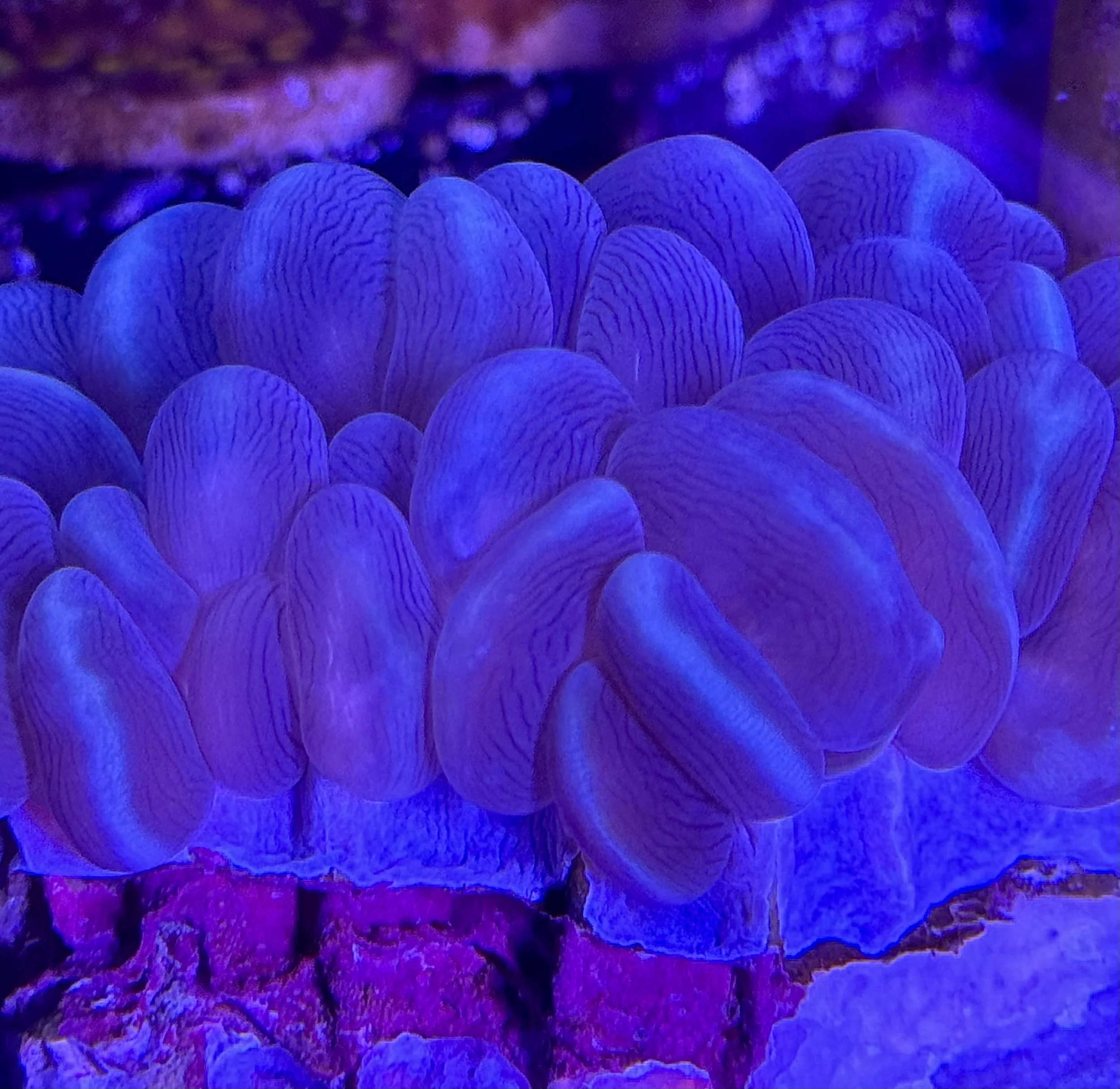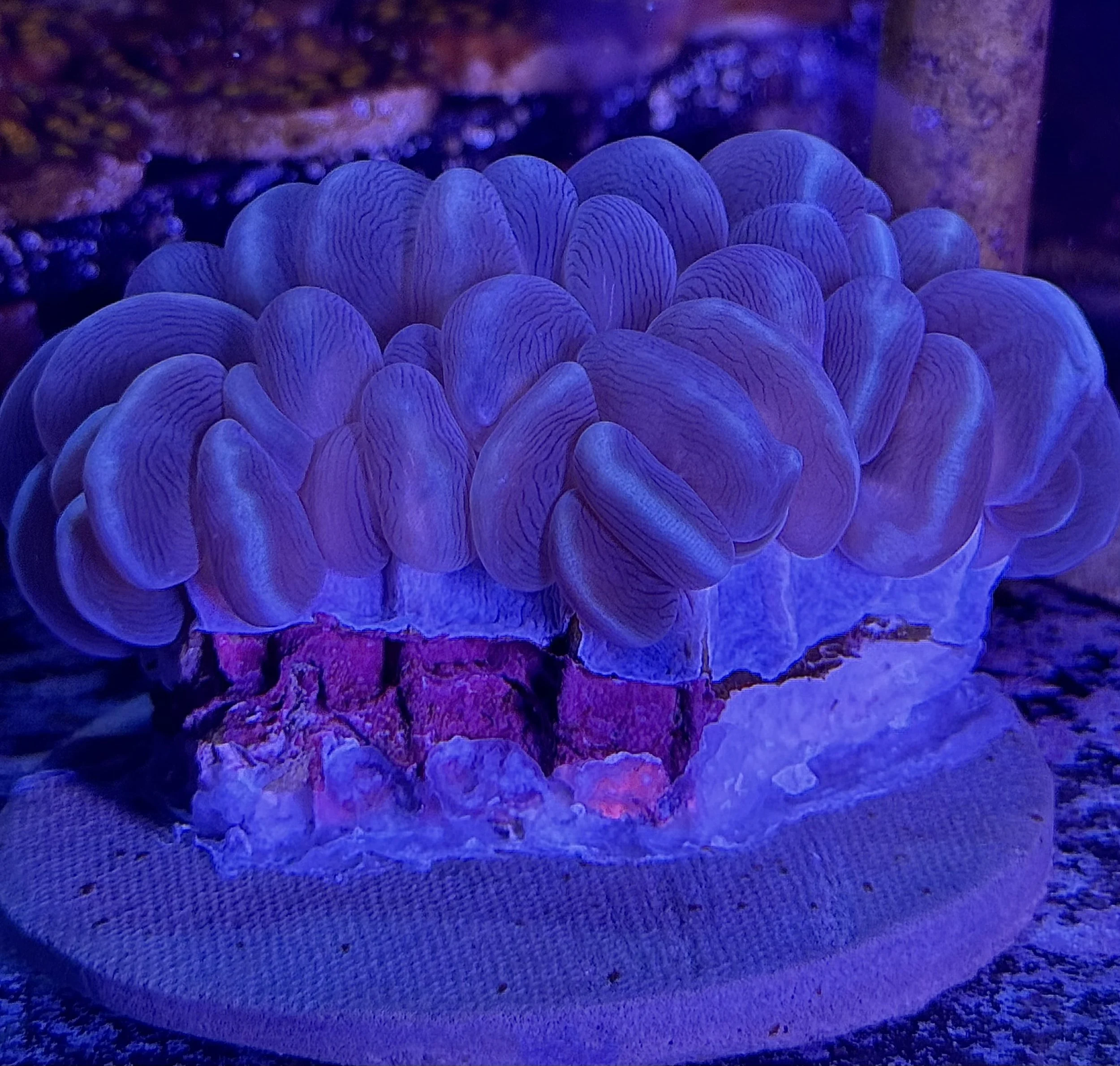Lighting: Moderate to moderately high lighting brings out vibrant coloration and supports steady growth. Many LPS prefer indirect or slightly shaded areas to avoid tissue stress.
Flow: Moderate, indirect water movement is ideal. Gentle but consistent flow keeps polyps clean and extended without damaging their fleshy tissue.
Placement: Mid to lower rockwork or sandbed is often best. Allow ample space between colonies, as many LPS have long sweeper tentacles and can sting neighbors.
Water Quality: Stable parameters are key — maintain balanced alkalinity, calcium, and magnesium levels with low to moderate nutrients. Sudden changes can stress fleshy polyps.
Feeding: LPS benefit from targeted or occasional broadcast feeding of meaty or particulate foods to support faster growth and vibrant coloration.
Difficulty: Beginner to intermediate friendly — many LPS are hardy but appreciate consistent conditions and occasional feeding for best results.
Sustainability: Fully aquacultured, zero wild collection — responsibly grown and well adapted to aquarium life.
Disclaimer:
Corals on the pictures are not WYSIWYG, photos was made under different lighting (blue or white lights) and in different tank (our show of frag tanks). You will get coral size as described, shape and color could be slightly off due to shipping stress.
After shipping stress soft corals (Mushrooms, Cloves, all types of Leathers) always will look shrink and colorless, won't look as on photos. For them to recover and adjust to new environments they will need 3-7 days in low lights and flow. Specially for mushroom we recommend to keep they under 100PAR and less.



